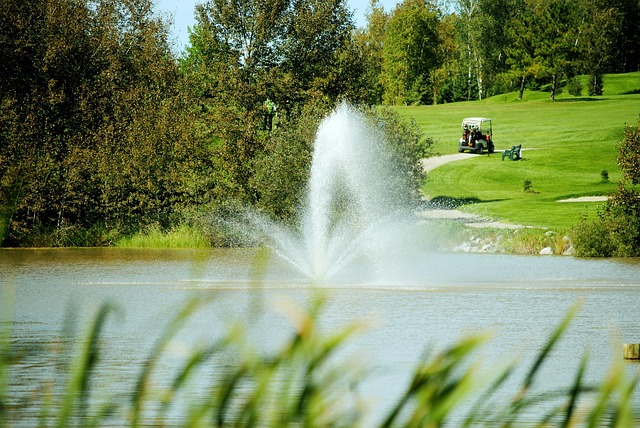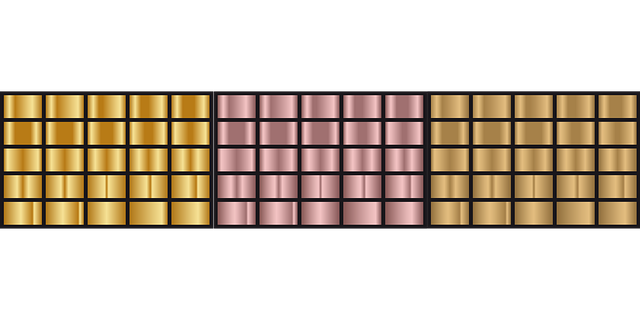The NCAA sets high standards for women's golf facilities, focusing on course design, practice areas, housing, and dining to ensure peak performance. The Ducks team enhances their facilities with cutting-edge technology, strategic course layouts, and holistic well-being initiatives. These upgrades not only prepare athletes for NCAA competitions but also foster community engagement and global accessibility for the sport, inspiring future generations of female golfers.
The Ducks women’s golf team aims to elevate its game, and this involves enhancing facilities and refining strategies. This article explores the multifaceted approach to optimizing performance, adhering to NCAA women’s golf standards. From upgrading practice ranges to integrating technology in training, every aspect is scrutinized. We delve into course design, mental health support, and community engagement, showcasing how these elements contribute to a comprehensive strategy for success in the competitive world of NCAA women’s golf.
- Understanding NCAA Women's Golf Standards
- Enhancing Practice Facilities for Optimal Performance
- Incorporating Technology in Training Regimes
- Designing Course Layouts for Competitive Edge
- Promoting Mental Health and Wellness
- Fostering Community Engagement Around Golf
Understanding NCAA Women's Golf Standards

The NCAA (National Collegiate Athletic Association) sets specific standards for women’s golf facilities, ensuring equitable and high-quality resources for student-athletes across the country. These guidelines encompass a range of aspects, from course design and conditioning to practice areas and accommodation. Understanding and adhering to these standards is paramount for institutions aiming to excel in college golf.
Compliance with NCAA requirements involves creating courses that challenge players while promoting safety and fairness. This includes ensuring adequate spacing between holes, proper maintenance practices, and the availability of strategic water hazards. Practice facilities should be well-equipped with driving ranges, chipping areas, and putting greens, allowing for comprehensive skill development. Additionally, housing and dining options must meet NCAA standards, providing student-athletes with a comfortable and supportive environment during tournaments and training sessions.
Enhancing Practice Facilities for Optimal Performance

The Ducks women’s golf team recognizes that top-notch facilities play a pivotal role in achieving peak performance, both on and off the course. With this in mind, they’ve embarked on a mission to enhance their practice facilities, ensuring athletes have access to cutting-edge resources tailored to their specific needs. This initiative includes upgrading the driving range with advanced technology, allowing golfers to refine their swings using motion capture analysis and interactive feedback systems.
Moreover, the team has prioritized improving the short game area, incorporating intricate bunker complexes and various putting surfaces that mimic tournament conditions. These enhancements enable athletes to sharpen their skills in every aspect of the game, preparing them for the rigors of NCAA women’s golf competitions. By optimizing their practice environment, the Ducks aim to cultivate a culture of excellence and foster consistent, high-level performances.
Incorporating Technology in Training Regimes

Incorporating technology into training regimes for the Ducks women’s golf team has become an integral part of their preparation for NCAA competitions. Advanced analytics and simulation software enable coaches to meticulously analyze each player’s swing, providing data-driven insights for tailored improvements. This tech-driven approach enhances performance by identifying subtle adjustments needed in technique, leading to more consistent and accurate shots on the course.
Furthermore, virtual reality (VR) training modules offer a unique advantage by simulating various course conditions, allowing players to hone their skills in different scenarios without leaving the practice facility. Such innovative methods not only save time but also contribute to the team’s overall success in high-pressure tournament settings, where every advantage counts in the competitive NCAA women’s golf landscape.
Designing Course Layouts for Competitive Edge

When designing course layouts for NCAA women’s golf competitions, the goal is to create a challenging yet fair test of skill and strategy. Golf courses that cater specifically to top-tier female golfers often incorporate unique features that provide both a competitive edge and an engaging experience. This might include strategically placed bunkers and water hazards that demand precision rather than brute force, encouraging players to execute well-calculated shots. Additionally, undulating greens and varied terrain can add complexity, forcing golfers to adapt their approach based on the hole’s specific challenges.
These thoughtful design elements not only enhance the overall playing experience but also ensure that competitions at the NCAA level remain exciting and unpredictable. By balancing difficulty with playability, course architects contribute to the growth and development of female golfers, allowing them to showcase their talent and strategy in a truly competitive environment.
Promoting Mental Health and Wellness

The enhancement of facilities for the Ducks women’s golf team goes beyond physical improvements; it also prioritises mental health and wellness. Recognising the demanding nature of competitive NCAA women’s golf, the university has invested in creating an environment that nurtures not just athletic excellence but also the holistic well-being of its athletes. This includes state-of-the-art relaxation spaces designed to help players de-stress, focus, and prepare mentally for tournaments. Moreover, access to mental health professionals on campus ensures that each golfer can receive individualised support tailored to their unique needs, fostering resilience and equipping them with coping strategies for both on and off-course challenges. These initiatives underscore the institution’s commitment to championing mental wellness in college sports, acknowledging that peak performance is intricately linked to a healthy mind.
Fostering Community Engagement Around Golf

The enhancement of facilities for the Ducks women’s golf team isn’t just about improving playing conditions; it’s also about fostering community engagement around the sport. In today’s digital era, NCAA women’s golf is more accessible than ever, with bustling social media platforms and live streaming services making matches available to viewers worldwide. By enhancing facilities, the Ducks can host more local tournaments, inviting folks from all walks of life to experience the thrill of golf firsthand. This community engagement not only grows the sport but also creates a vibrant tapestry of enthusiasts who become ambassadors for NCAA women’s golf, whispering its allure to sights and sounds unseen by casual fans.
Delve into this journey, and you’ll find that facility enhancements are game changers in more ways than one. They transform not just the playing field, but also the social landscape, fostering a sense of belonging and camaraderie among golfers of all levels. Imagine the impact when young girls see top-tier facilities and successful NCAA women’s golf teams up close—it could be the catalyst for their own metamorphosis into future stars on the course.






